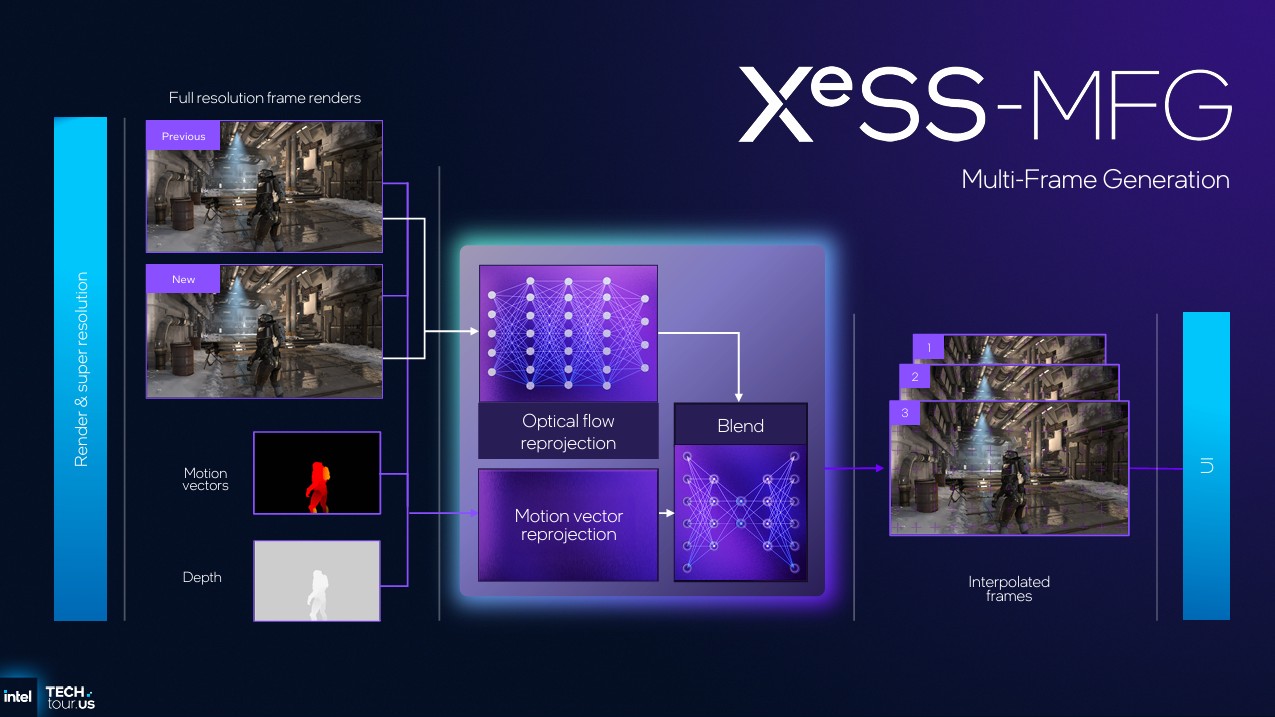Intel Arc GPUs receive major upgrades on Panther Lake with XeSS 3 and Xe3 cores
With new Xe3 cores, AI‑powered rendering, and XeSS 3 frame generation, Panther Lake gives Arc its strongest showing yet.
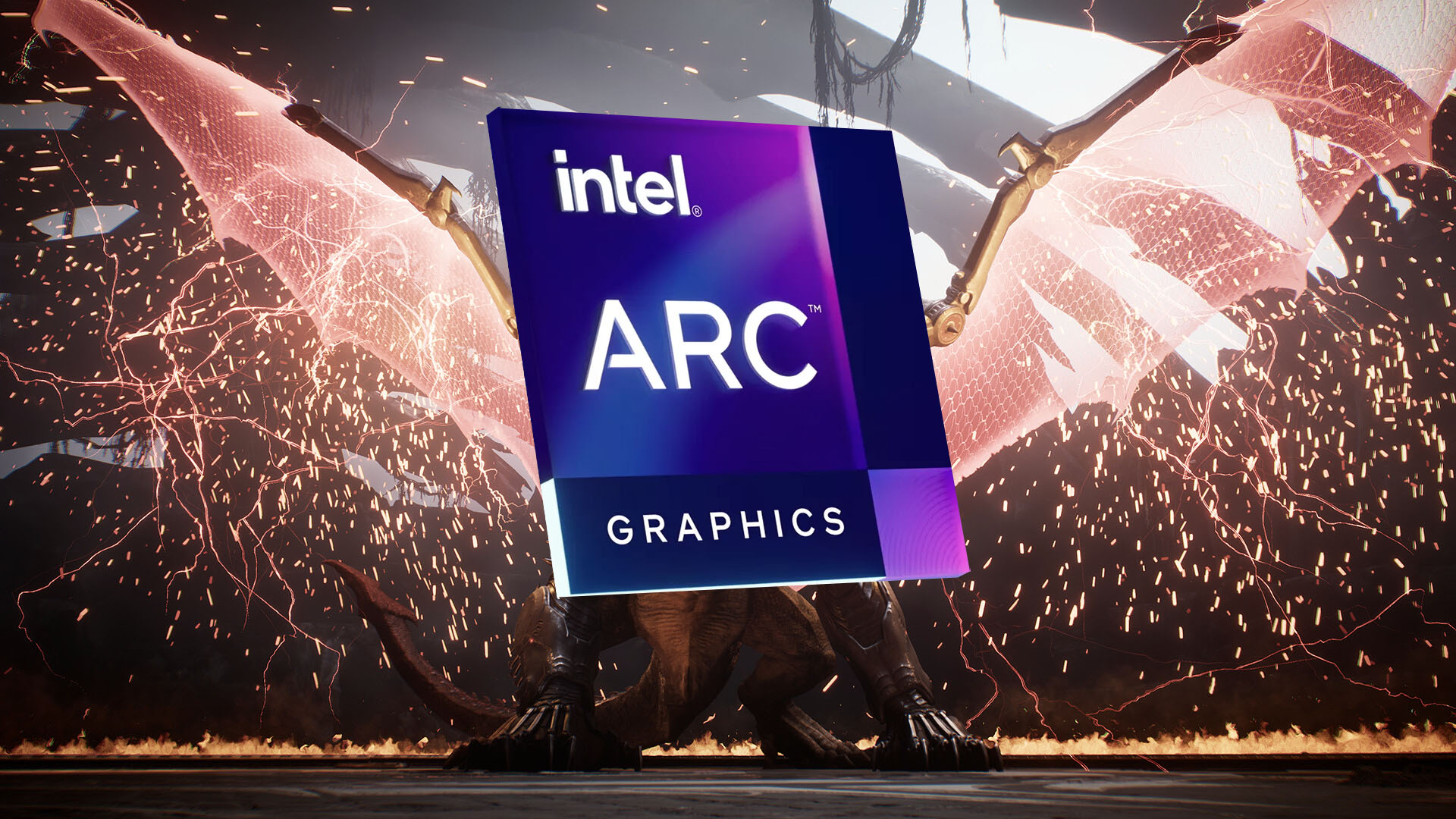
Intel Tech Tour 2025 may have been all about new mobile chipsets and artificial intelligence on the surface, but dig a little deeper, and you'll uncover Intel's ambitions for more capable integrated GPUs in our laptops.
I spent time with Intel in Chandler, AZ to learn more about the upcoming Panther Lake family of next-generation chips, including the brand-new Intel Arc B-Series iGPU that's being paired with them.
Intel isn't just touting a sizeable performance increase year-over-year when gaming or spinning up sizeable AI LLMs with Panther Lake — it's also debuting new features and advancements as part of XeSS 3, which also debuts with Panther Lake. Here's what you need to know.
Intel Arc B-Series comes to mobile hardware
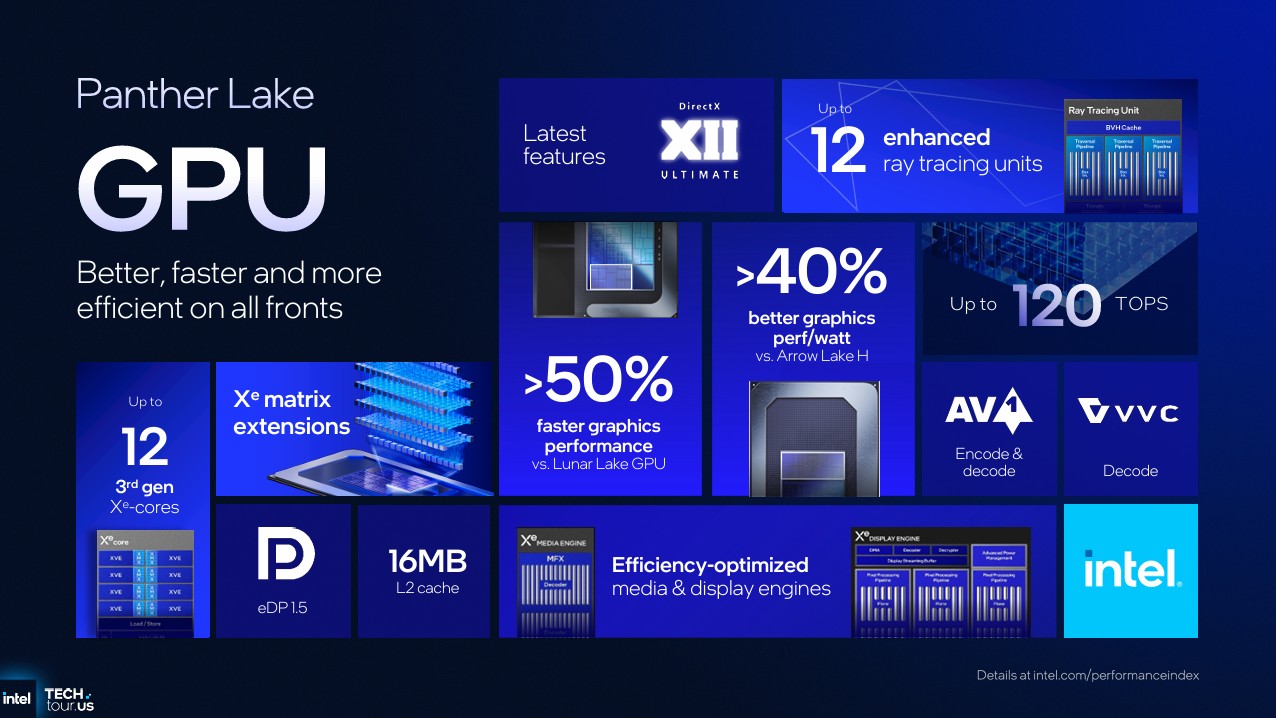
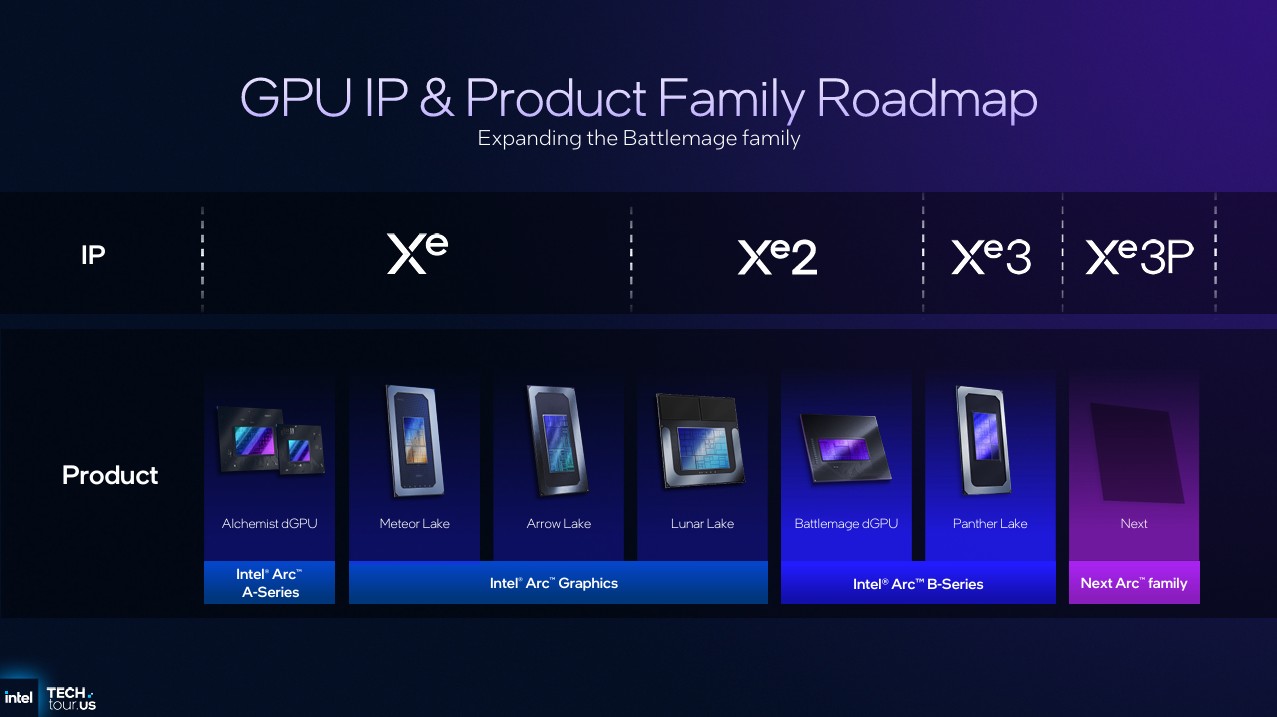

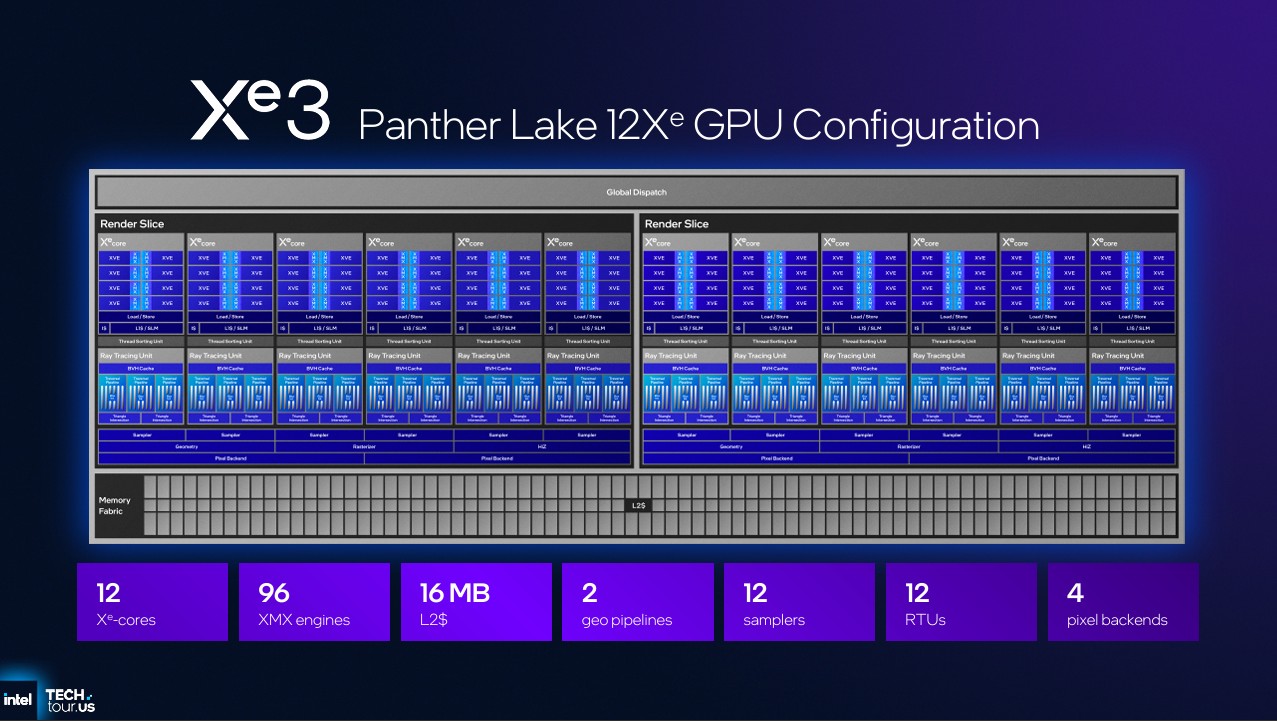
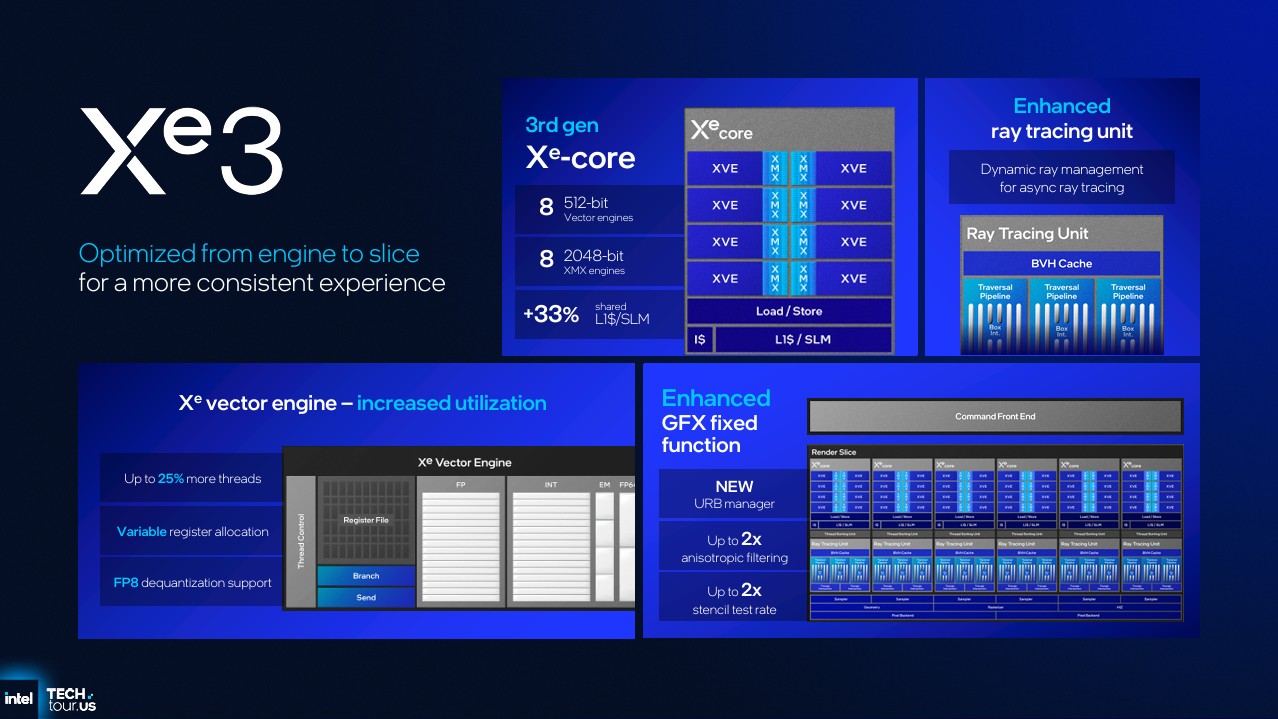
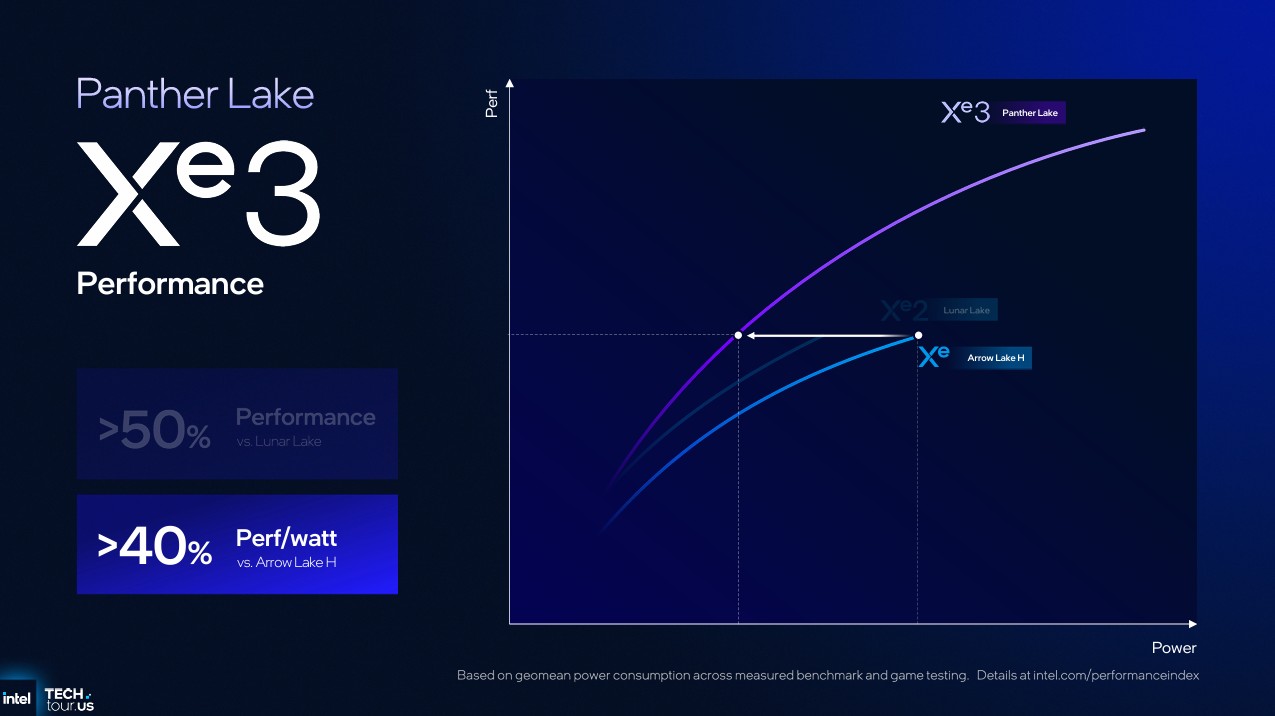
I've already broken down everything you need to know about Panther Lake itself, and I even got a tour of the factory that's making it possible. It's worth taking some extra time to highlight the GPU-specific improvements Intel is delivering with Panther Lake.
For one, Intel has detached the GPU tile from everything else, allowing the company to scale up the graphics independently of the rest of the chipset. Intel is going to refer to Panther Lake's GPU as "Intel Arc B-Series," which may sound familiar — because that's the current generation of Intel's desktop-bound GPUs.
Panther Lake utilizes brand-new, third-generation Xe cores, though, so it's actually a new architecture. Intel even admitted during its keynote that it knows the naming scheme is a little odd, but it's the end result that matters.
With Xe3, Intel focused on end-to-end optimization for consistency and efficiency. The new Xe3 cores aren't a massive departure from the last generation, but you do get upgraded ray tracing cores, improved vector engines, increased memory bandwidth and reduced memory bottlenecks, massively enhanced platform tuning to better allocate and use GPU resources, and other advancements.
All the latest news, reviews, and guides for Windows and Xbox diehards.
Various optimizations across the board help deliver sizeable year-over-year performance gains with Intel Arc B-Series and Panther Lake.
You'll be able to get Panther Lake with up to 12 Xe3 cores and 12 ray tracing cores, and Intel promises more than 50% greater performance compared to Lunar Lake and more than 40% improved performance-per-watt than Arrow Lake. Microarchitecture improvements mean you can see even greater gains with some games or artificial intelligence workloads, with less stuttering and faster load times.
Throw in an upgraded media display engine with support for more codecs, Embedded DisplayPort (eDP) 1.5 support, and other AI-specific optimizations that result in up to 120 TOPS of computational power, and Intel Arc is looking pretty good inside Panther Lake. Intel teased during the Tech Tour that Panther Lake (and the new Arc GPU) is going to appear in PC gaming handhelds, too, so I'm excited to see what that looks like.
Intel also told me it's still committed to Arc moving forward, even with the news that Intel and NVIDIA are teaming up to jointly develop x86 processors fused with RTX GPUs.
New XeSS features that take advantage of Xe3 cores
Intel Panther Lake isn't just about the hardware, as the supporting software, firmware, and other platform features are also expanding, and that includes the arrival of XeSS 3. The equivalent of NVIDIA DLSS but for Intel Arc graphics, XeSS 2 already offers AI-powered Super Resolution upscaling, single Frame Generation, and Low Latency features.
Now, XeSS 3 is here with Intel's take on Multi-Frame Generation, which can use one natively rendered frame to generate up to three additional, artificial frames. We've already seen this feature with NVIDIA's DLSS 4, and can as much as quadruple your framerates without a significant decrease in visual fidelity or stability.
I saw XeSS 3 Multi-Frame Generation in action with Painkiller and was even able to play myself, and I found myself more impressed than with NVIDIA's implementation of the feature. Multi-Frame Generation inherently introduces additional motion latency (because each artificial frame is created ahead of time), and it's most noticeable with high-speed games that require fast movements and reactions, like competitive shooters.
Intel's Multi-Frame Generation feature in XeSS 3 felt great in my limited hands-on time.
Just in my limited hands-on, though, it felt to me like Intel's Multi-Frame Generation was slightly more responsive than NVIDIA's. More than that, though, is the fact that all XeSS 2-supported games will immediately support Multi-Frame Generation through XeSS 3, which will be controlled independently through the Intel Graphics Software app.
Intel's latest Arc GPUs also support Cooperative Vectors through DirectX XII Ultimate, an AI-accelerated rendering technique that can use small neural networks (powered by Intel Xe3's upgraded AI engines) across shading stages and reduce the load on the GPU.
Finally, Intel is debuting Precompiled Shader Distribution, an automatic service that collects and compiles the latest shaders for games, stores them in the Intel cloud, and then loads those shaders seamlessly when you boot up a game — ideally saving you time and GPU resources.

Follow Windows Central on Google News to keep our latest news, insights, and features at the top of your feeds!

Zachary Boddy (They / Them) is a Staff Writer for Windows Central, primarily focused on covering the latest news in tech and gaming, the best Xbox and PC games, and the most interesting Windows and Xbox hardware. They have been gaming and writing for most of their life starting with the original Xbox, and started out as a freelancer for Windows Central and its sister sites in 2019. Now a full-fledged Staff Writer, Zachary has expanded from only writing about all things Minecraft to covering practically everything on which Windows Central is an expert, especially when it comes to Microsoft.
You must confirm your public display name before commenting
Please logout and then login again, you will then be prompted to enter your display name.
